Secondary Consumer: An Elaborate Study
Published on July 1st, 2024
Definition of Secondary Consumers
Secondary consumers are a pivotal part of the food chain, occupying the third trophic level. These organisms, often carnivores and omnivores, feed primarily on primary consumers, which are herbivores that ingest producers (plants and algae). By preying on these herbivores, secondary consumers play a critical role in the transfer of energy within ecosystems.
Secondary consumers can be categorized into two main types:
- Carnivores: These animals exclusively eat other animals. Examples include lions, wolves, and hawks.
- Omnivores: These animals have a diet consisting of both plant and animal matter. Examples include bears and certain bird species.
The distinction between primary, secondary, and tertiary consumers helps to understand the flow of energy and nutrients in an ecosystem. Primary consumers are herbivores that eat producers, secondary consumers eat the herbivores, and tertiary consumers often prey on secondary consumers.
Importance in the Food Chain
Secondary consumers are integral to the health and balance of ecosystems. Their importance can be summarized in the following points:
Population Control: Secondary consumers help regulate the population of primary consumers. By preying on herbivores, they prevent overgrazing and depletion of vegetation, which is crucial for maintaining the health of the ecosystem. For instance, in the absence of secondary consumers like wolves, the population of herbivores such as deer can explode, leading to overgrazing and destruction of plant life
Energy Transfer: They facilitate the transfer of energy from primary consumers to higher trophic levels. This energy transfer is essential for the sustenance of tertiary consumers and the overall energy dynamics of the ecosystem. According to the 10% rule of energy transfer in ecology, only about 10% of the energy is transferred from one trophic level to the next. Thus, secondary consumers play a crucial role in the efficiency of this transfer(Secondary Consumer Page…).
Biodiversity and Ecosystem Stability: By keeping the population of primary consumers in check, secondary consumers help maintain biodiversity. A balanced ecosystem with a diverse range of species is more resilient to environmental changes and disruptions. For example, the reintroduction of wolves in Yellowstone National Park has had a cascading positive effect on the entire ecosystem, promoting plant growth and benefiting a variety of other species(Secondary Consumer Page…).
Nutrient Recycling: Secondary consumers contribute to the breakdown and recycling of nutrients. When they prey on primary consumers, they help decompose organic matter, returning essential nutrients to the soil and promoting plant growth. This cyclical process ensures the continuous availability of nutrients necessary for the survival of all organisms within the ecosystem.
Secondary consumers are indispensable to the functioning and stability of ecosystems. Their role in population control, energy transfer, biodiversity maintenance, and nutrient recycling underscores their importance in the food chain. Understanding and protecting these vital organisms is crucial for preserving the health and balance of our natural world.
Characteristics of Secondary Consumers
Definition and Examples
Secondary consumers are organisms that occupy the third trophic level in a food chain, feeding on primary consumers (herbivores). They can be classified into two main groups: carnivores and omnivores.
- Carnivores: These secondary consumers exclusively consume animal flesh. Examples include lions, hawks, and sharks. Lions, for instance, hunt herbivores like zebras and antelopes, showcasing their role as apex predators in their habitats.
- Omnivores: These secondary consumers have a varied diet that includes both plant and animal matter. Bears and raccoons are prime examples of omnivores. Bears can eat berries, insects, and fish, adapting their diet based on availability.

Carnivores
Carnivorous secondary consumers are pivotal in controlling the population of primary consumers, ensuring ecological balance. Their diets consist of herbivores, which they hunt using specialized techniques and adaptations.
- Examples: Lions (Panthera leo), which hunt in packs to take down large prey, and hawks (Accipitridae), which use their keen eyesight to spot and capture small mammals and birds.
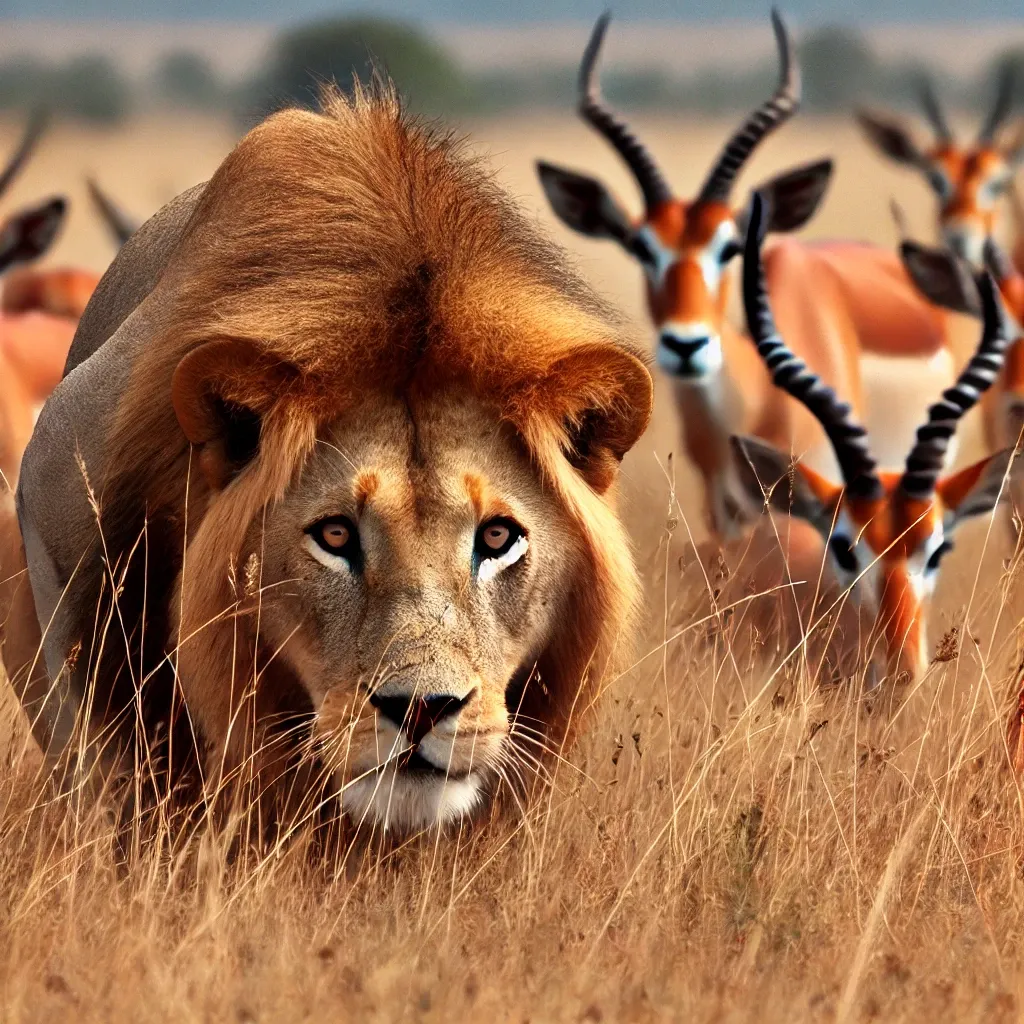
Omnivores
Omnivorous secondary consumers have the advantage of dietary flexibility, allowing them to survive in diverse environments. This dietary adaptability helps in stabilizing food webs by linking multiple trophic levels.
- Examples: Bears (Ursidae), which consume fish, plants, and small mammals, and raccoons (Procyon lotor), which eat fruits, insects, and small vertebrates.
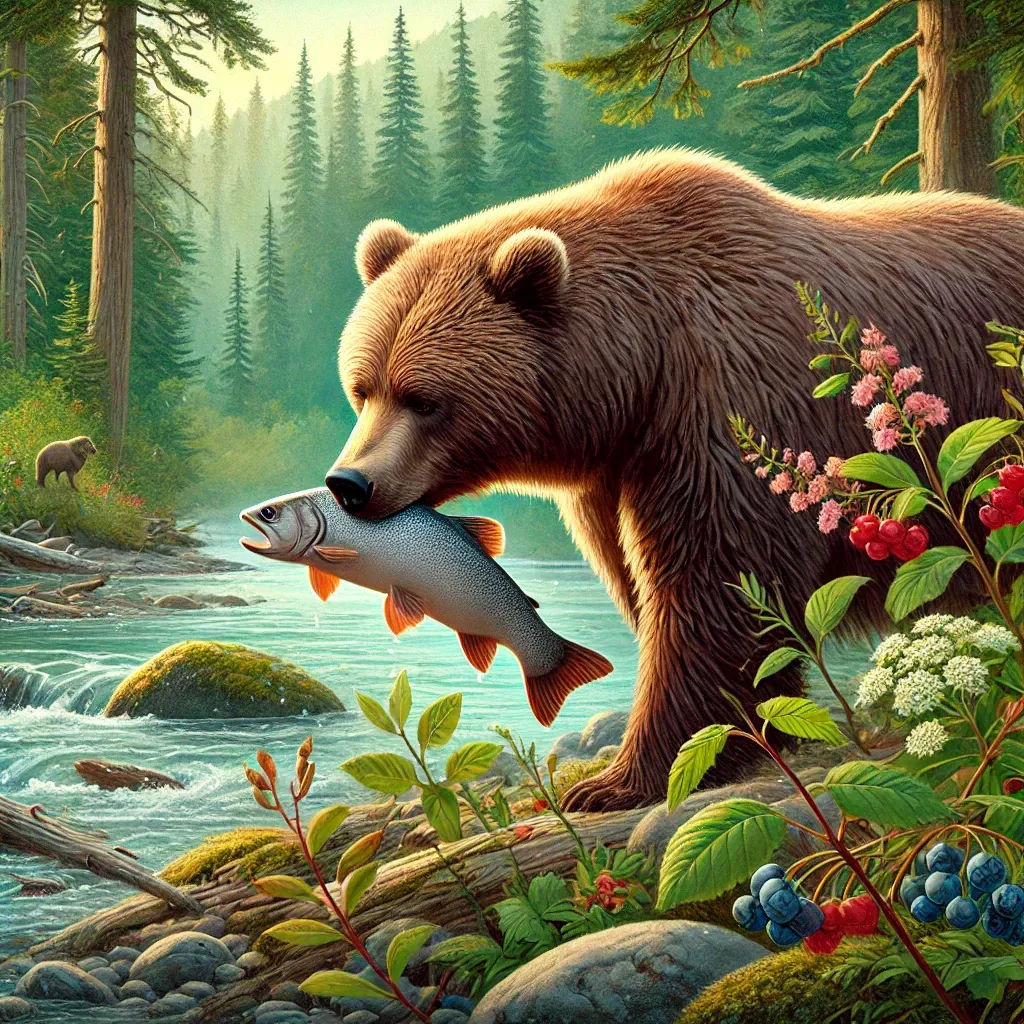
Behavioral Traits
Secondary consumers exhibit various behavioral traits that enhance their survival and hunting efficiency. These behaviors include:
- Pack Hunting: Seen in species like wolves (Canis lupus), which hunt in packs to take down larger prey.
- Solitary Hunting: Exhibited by animals like tigers (Panthera tigris), which rely on stealth and strength to ambush prey.
- Scavenging: Some secondary consumers, like hyenas (Hyaenidae), scavenge for food, utilizing both hunting and scavenging to meet their dietary needs.
Physical Adaptations
Secondary consumers possess physical adaptations that aid in their predatory lifestyle. These adaptations include:
- Dentition: Carnivores have sharp canines and incisors for tearing flesh, while omnivores have a mix of sharp teeth and flat molars for grinding plant material.
- Claws and Talons: Predators like eagles (Aquila) have strong talons to grasp prey, while big cats have retractable claws for gripping and tearing.
Dentition
The dentition of secondary consumers is specialized to suit their dietary needs. Carnivores have well-developed canines for piercing and holding onto prey, while omnivores have a combination of sharp teeth and flat molars.
- Examples: The lion's teeth include sharp canines for killing prey and carnassials for shearing meat, while bears have molars that can grind plant material in addition to their sharp canines.
Hunting Techniques
Secondary consumers employ various hunting techniques to capture their prey. These techniques vary based on the predator's adaptations and prey behavior.
- Stalking and Ambushing: Tigers use stealth to approach their prey quietly before launching a surprise attack.
- Aerial Hunting: Hawks and eagles use their keen vision to spot prey from above, diving swiftly to capture it.
Sensory Adaptations
Effective predation relies heavily on well-developed sensory adaptations. Secondary consumers have acute senses that aid in locating and capturing prey.
- Keen Eyesight: Birds of prey like hawks have excellent vision, allowing them to spot small animals from great distances.
- Enhanced Hearing: Predators like owls (Strigiformes) have exceptional hearing to detect the slightest movement of their prey in the dark.
- Sensitive Smell: Animals such as wolves have a highly developed sense of smell to track and locate prey over long distances.
Understanding the characteristics of secondary consumers, from their behavioral traits and physical adaptations to their dentition and sensory capabilities, reveals their crucial role in maintaining ecological balance. By regulating the populations of primary consumers, secondary consumers ensure the stability and health of ecosystems. This segment comprehensively covers the diverse aspects of secondary consumers, providing a detailed and engaging exploration of their significance in the natural world.
Terrestrial Secondary Consumers
What are Terrestrial Secondary Consumers?
Terrestrial secondary consumers are organisms that inhabit land-based ecosystems and feed on primary consumers, typically herbivores. These predators play a crucial role in maintaining the balance of terrestrial ecosystems by controlling the population of herbivores and facilitating the flow of energy through the food web.
Examples of Terrestrial Secondary Consumers
Terrestrial secondary consumers are diverse and can be found in various habitats, from forests and grasslands to deserts and mountains. Here are some notable examples:
Foxes
Foxes, belonging to the genus Vulpes, are agile and adaptable terrestrial secondary consumers. They are omnivores with a diet that includes small mammals, birds, insects, and fruits. Foxes are known for their cunning hunting techniques and nocturnal behavior. For example, the red fox (Vulpes vulpes) preys on rodents, rabbits, and birds, playing a significant role in controlling their populations. Their ability to thrive in diverse environments, including urban areas, highlights their adaptability as secondary consumers.
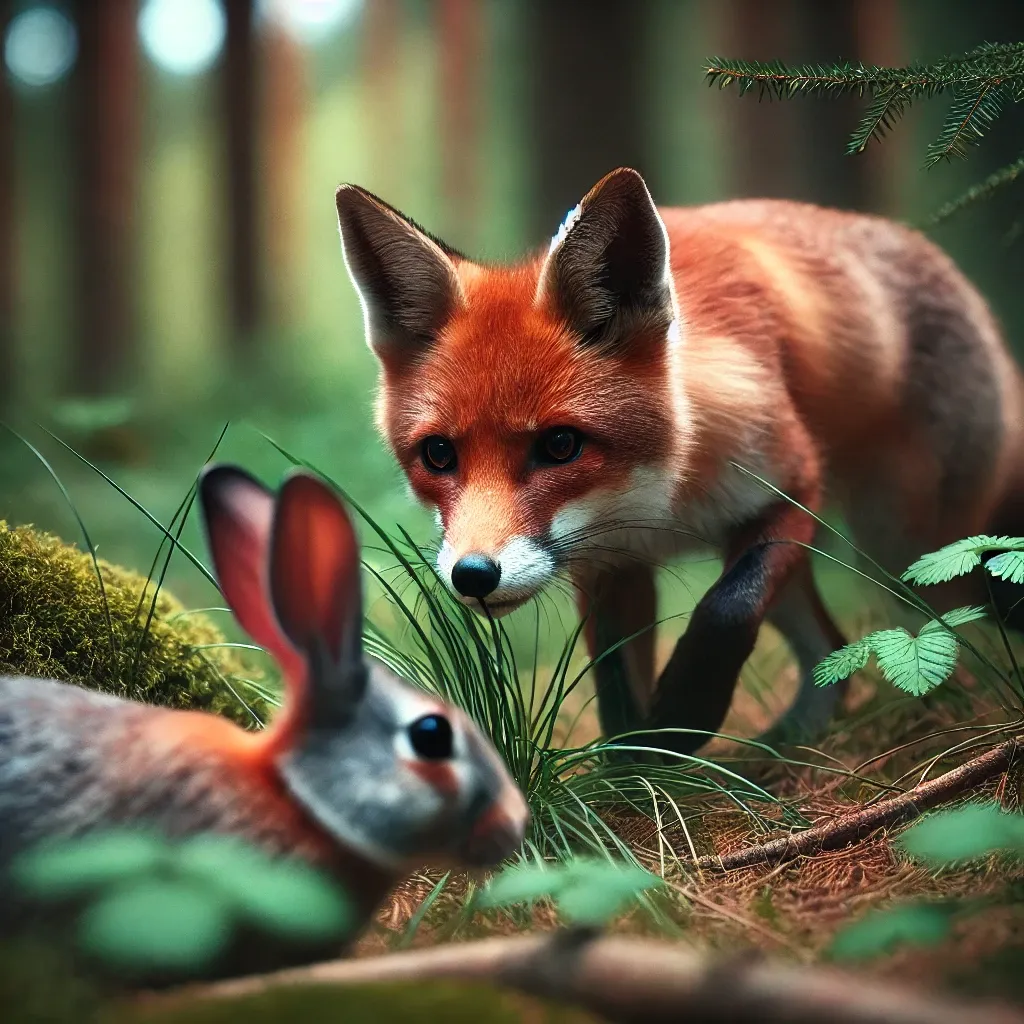
Snakes
Snakes are another group of important terrestrial secondary consumers. These reptiles are primarily carnivorous and consume a variety of prey, including rodents, birds, amphibians, and other small animals. For instance, the common garter snake (Thamnophis sirtalis) preys on amphibians and small mammals, while the rattlesnake (Crotalus) feeds on rodents and birds. Snakes have specialized adaptations such as venom, constriction, and highly developed sensory organs to detect and capture their prey efficiently.
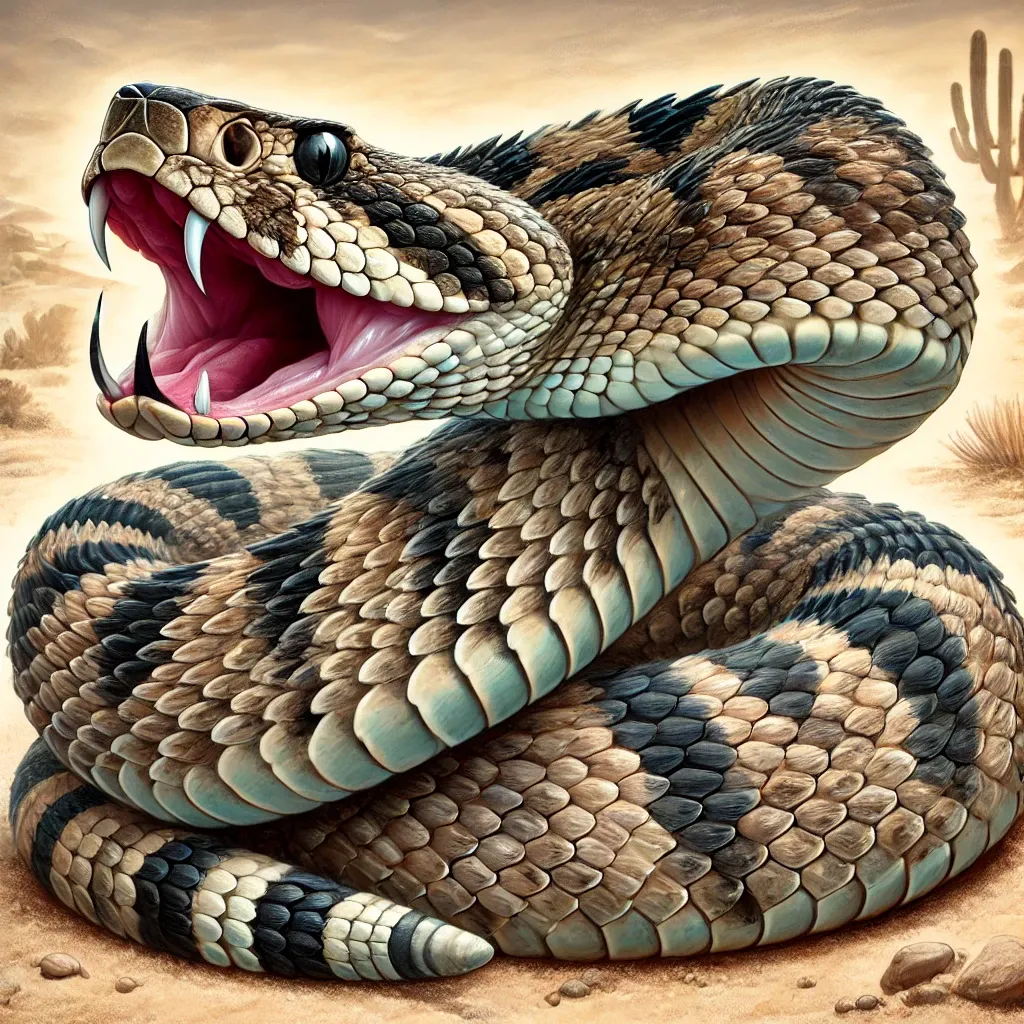
Birds of Prey
Birds of prey, also known as raptors, are apex predators in many terrestrial ecosystems. These birds are characterized by their keen eyesight, strong talons, and sharp beaks, which they use to hunt and consume other animals. Examples of birds of prey include hawks and eagles:
- Hawks: Species such as the red-tailed hawk (Buteo jamaicensis) are versatile hunters that feed on a variety of prey, including small mammals, birds, and reptiles. Their excellent vision allows them to spot prey from great distances.
- Eagles: Bald eagles (Haliaeetus leucocephalus) are powerful predators that primarily hunt fish but also prey on small mammals and birds. They are known for their impressive wingspan and strong, curved beaks.
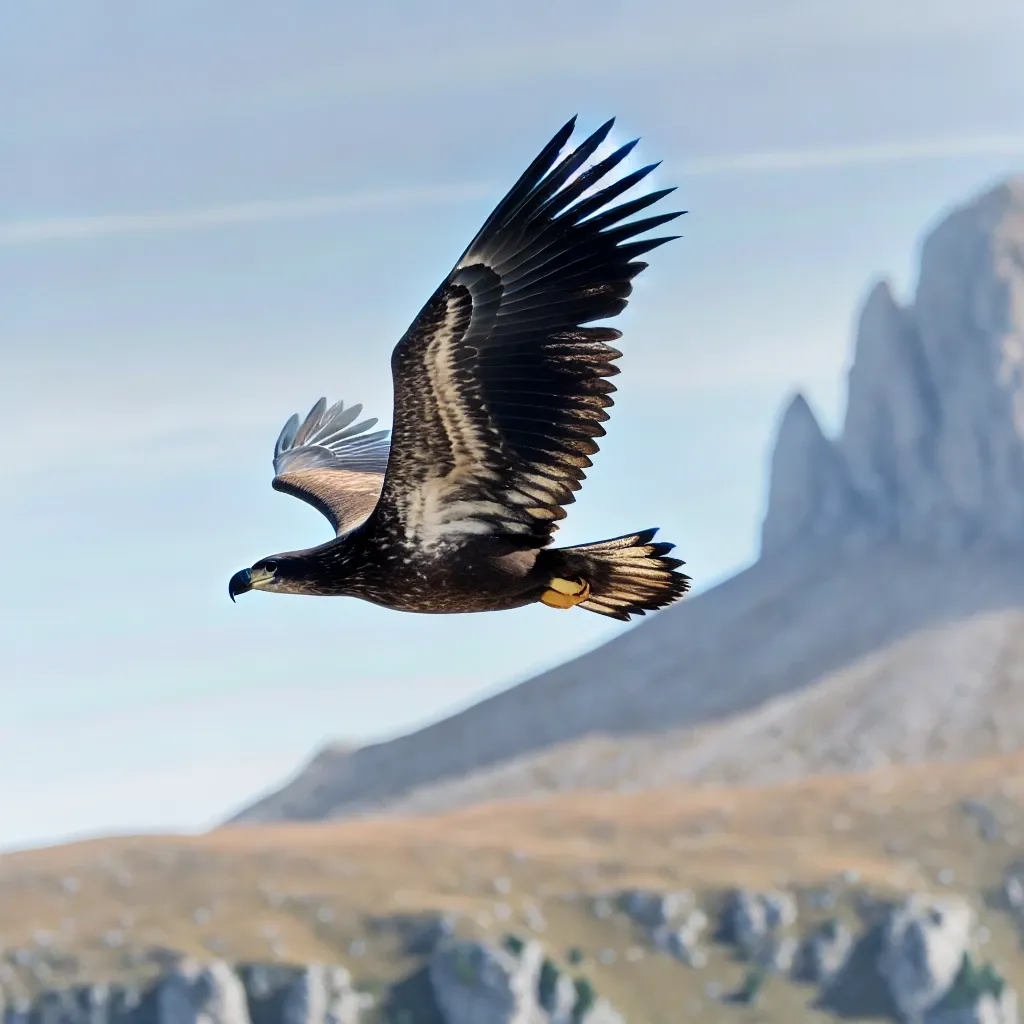
Terrestrial secondary consumers are vital components of land-based ecosystems, contributing to the regulation of primary consumer populations and the overall health of the environment. Foxes, snakes, and birds of prey each exemplify unique adaptations and behaviors that enable them to thrive as secondary consumers. By understanding the roles and characteristics of these predators, we gain insight into the intricate dynamics of terrestrial food webs and the importance of preserving these vital species.
Aquatic Secondary Consumers
What are Aquatic Secondary Consumers?
Aquatic secondary consumers are organisms that inhabit marine and freshwater ecosystems, feeding on primary consumers such as zooplankton, small fish, and other marine organisms. These secondary consumers play a critical role in maintaining the balance of aquatic ecosystems by regulating the population of primary consumers and ensuring the flow of energy through the food web.
Examples of Aquatic Secondary Consumers
Aquatic secondary consumers are diverse and can be found in various habitats, from coral reefs and open oceans to rivers and lakes. Here are some notable examples:
Fish
Fish are among the most common aquatic secondary consumers. They feed on smaller fish, crustaceans, and other marine organisms, helping to maintain the balance of marine ecosystems.
- Tuna: Tuna are large predatory fish that play a significant role as secondary consumers in marine food webs. They feed on smaller fish such as mackerel and herring, as well as squid. Tuna are known for their speed and agility, making them efficient predators.
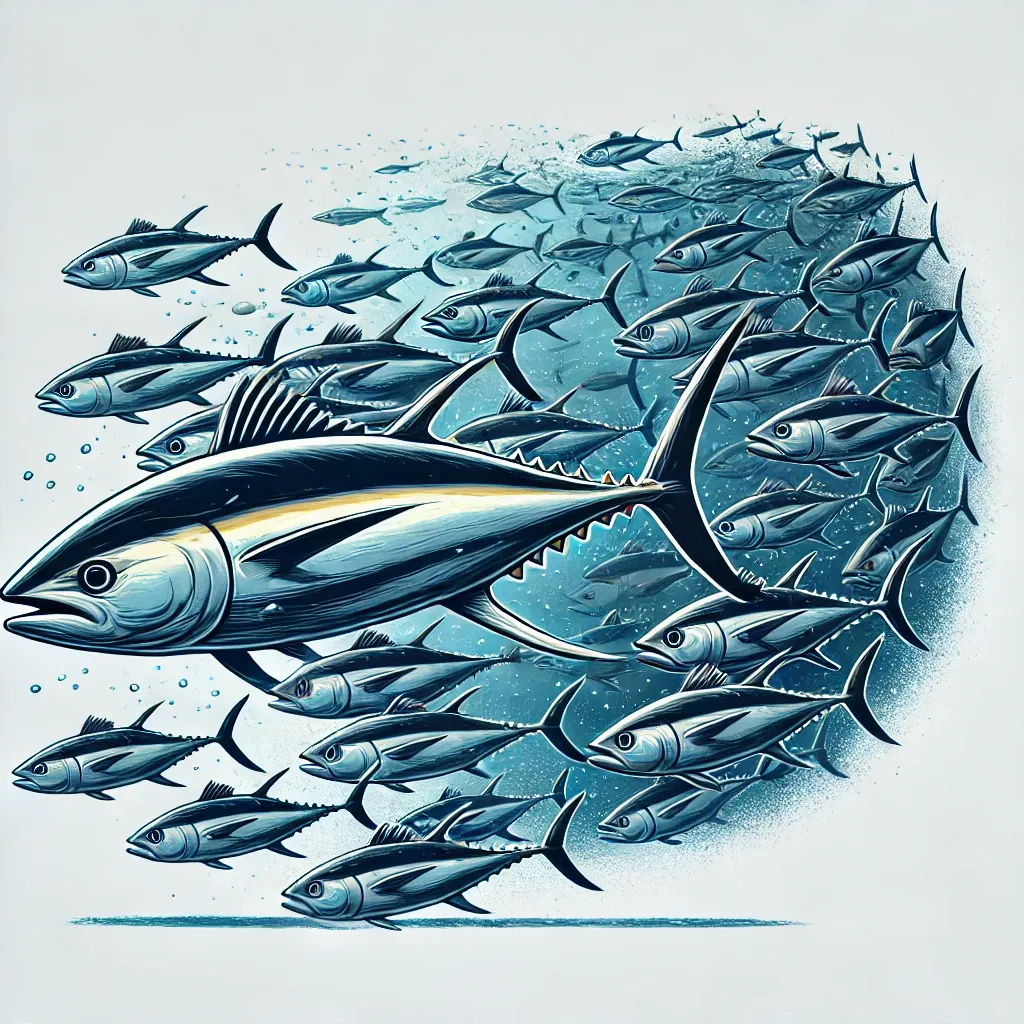
- Barracuda: Barracudas are aggressive predatory fish found in tropical and subtropical oceans. They have a varied diet that includes smaller fish, crustaceans, and cephalopods. Barracudas are known for their sharp teeth and streamlined bodies, allowing them to catch prey with precision.
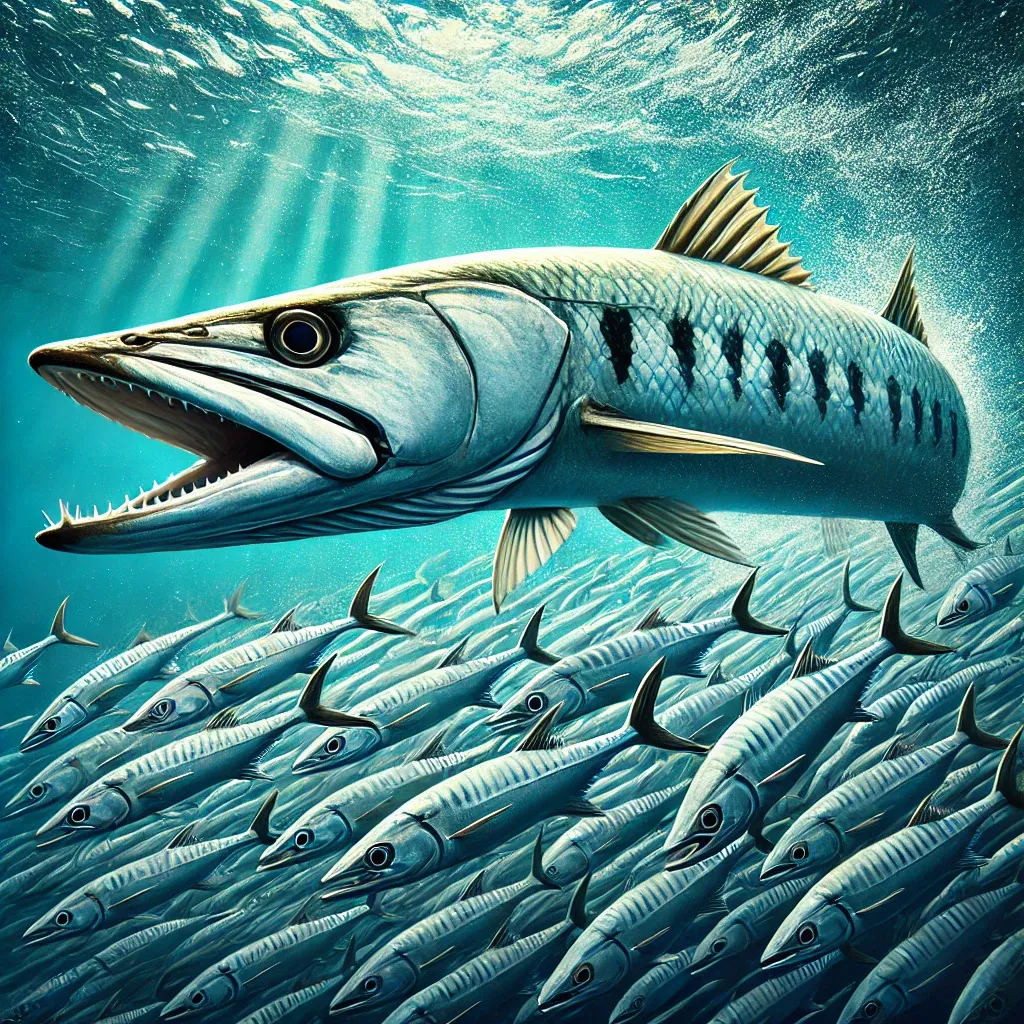
Marine Mammals
Marine mammals are also prominent secondary consumers in aquatic ecosystems. They feed on a variety of prey, including fish, squid, and crustaceans.
- Dolphins: Dolphins are highly intelligent marine mammals that occupy a crucial niche as secondary consumers. They hunt in groups and use echolocation to locate schools of fish and squid. Dolphins are known for their cooperative hunting strategies, which increase their efficiency in capturing prey.
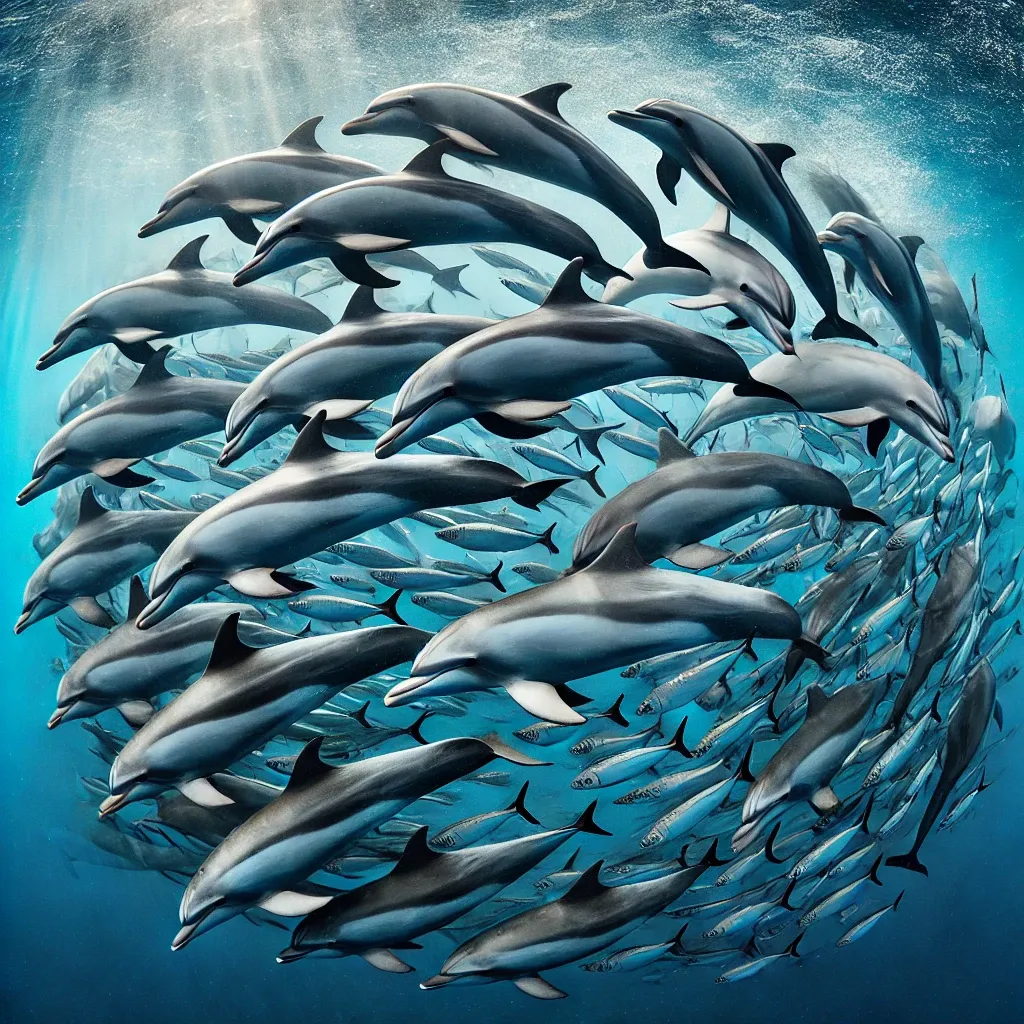
- Seals: Seals are another example of marine mammals that act as secondary consumers. They primarily feed on fish and squid, using their agile swimming abilities to pursue and capture prey.
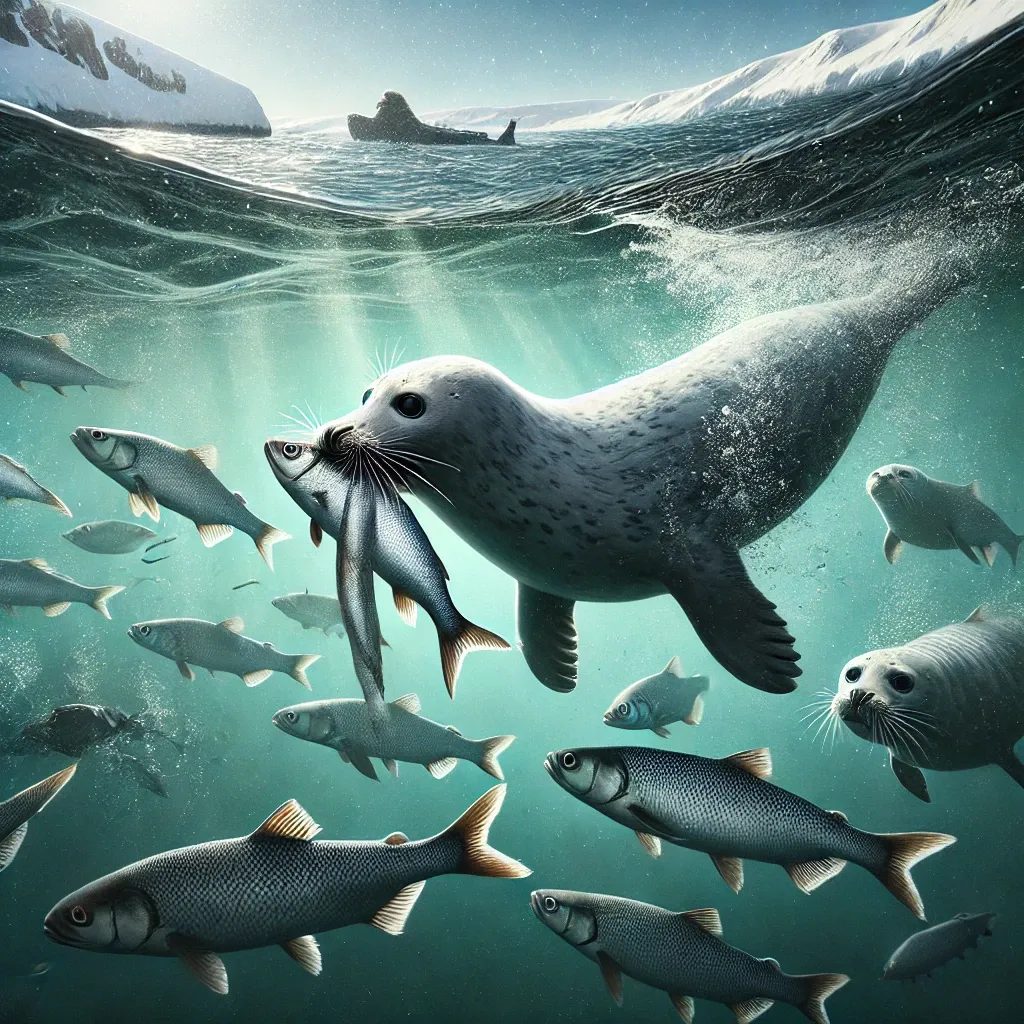
Crustaceans
Crustaceans, such as crabs and lobsters, are important secondary consumers in marine ecosystems. They feed on smaller marine organisms, including fish, mollusks, and other crustaceans.
- Crabs: Crabs are opportunistic feeders that play a significant role in nutrient recycling within marine ecosystems. They consume a variety of prey, including small fish, mollusks, and detritus. Crabs' strong pincers allow them to catch and manipulate their food effectively.
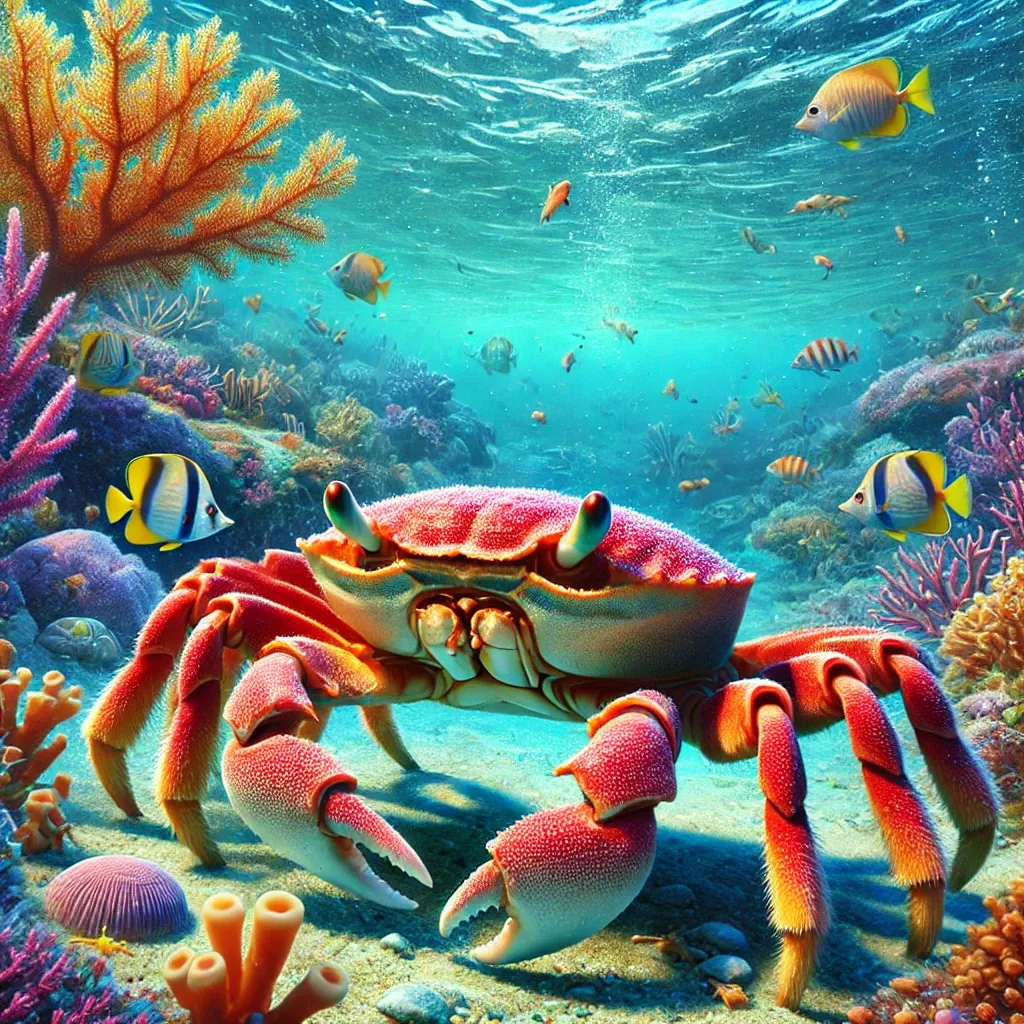
- Lobsters: Lobsters are nocturnal hunters that feed on fish, mollusks, and other crustaceans. They use their powerful claws to capture and crush their prey, contributing to the balance of the marine food web.
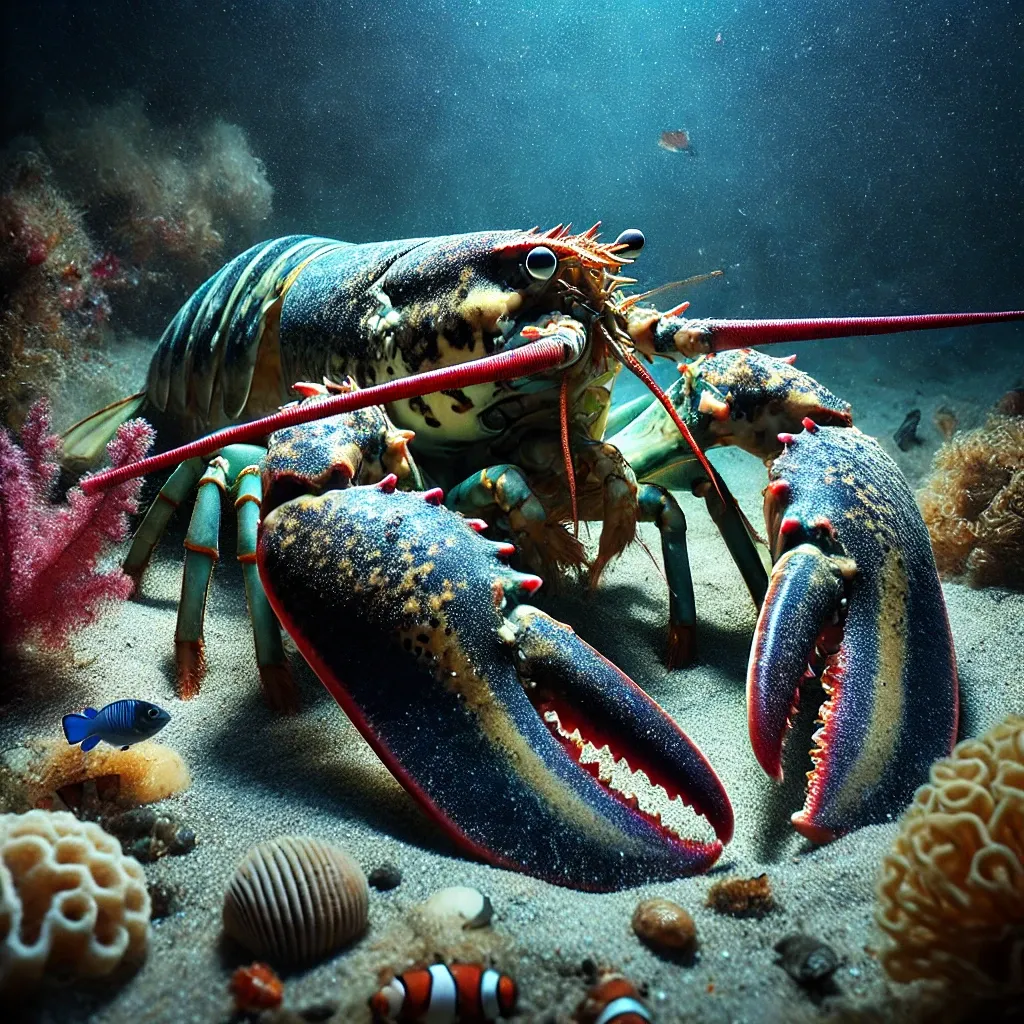
Aquatic secondary consumers are vital components of marine and freshwater ecosystems, contributing to the regulation of primary consumer populations and the overall health of aquatic environments. Fish like tuna and barracuda, marine mammals such as dolphins and seals, and crustaceans like crabs and lobsters each exemplify unique adaptations and behaviors that enable them to thrive as secondary consumers. By understanding the roles and characteristics of these predators, we gain insight into the intricate dynamics of aquatic food webs and the importance of preserving these vital species.
Avian Secondary Consumers
What are Avian Secondary Consumers?
Avian secondary consumers are birds that primarily feed on primary consumers such as insects, small mammals, and other birds. These birds play a crucial role in regulating the populations of their prey, thereby maintaining the balance of terrestrial ecosystems. Their diverse hunting strategies and adaptations enable them to thrive in various environments, from forests and grasslands to wetlands and urban areas.
Examples of Avian Secondary Consumers
Avian secondary consumers are characterized by their keen senses, specialized physical adaptations, and diverse hunting techniques. Here are some notable examples:
Owls
Owls are nocturnal birds of prey that are highly effective as secondary consumers. They have several adaptations that make them excellent hunters:
- Keen Vision and Hearing: Owls have large eyes adapted for low-light conditions, allowing them to see clearly in the dark. Their exceptional hearing helps them locate prey even in complete darkness.
- Silent Flight: The structure of their feathers enables silent flight, allowing them to approach prey undetected.
- Diet: Owls primarily feed on small mammals such as mice and voles, but they also consume insects, birds, and even amphibians. For example, the barn owl (Tyto alba) is known for its ability to hunt in total darkness, using its acute hearing to detect and capture prey.
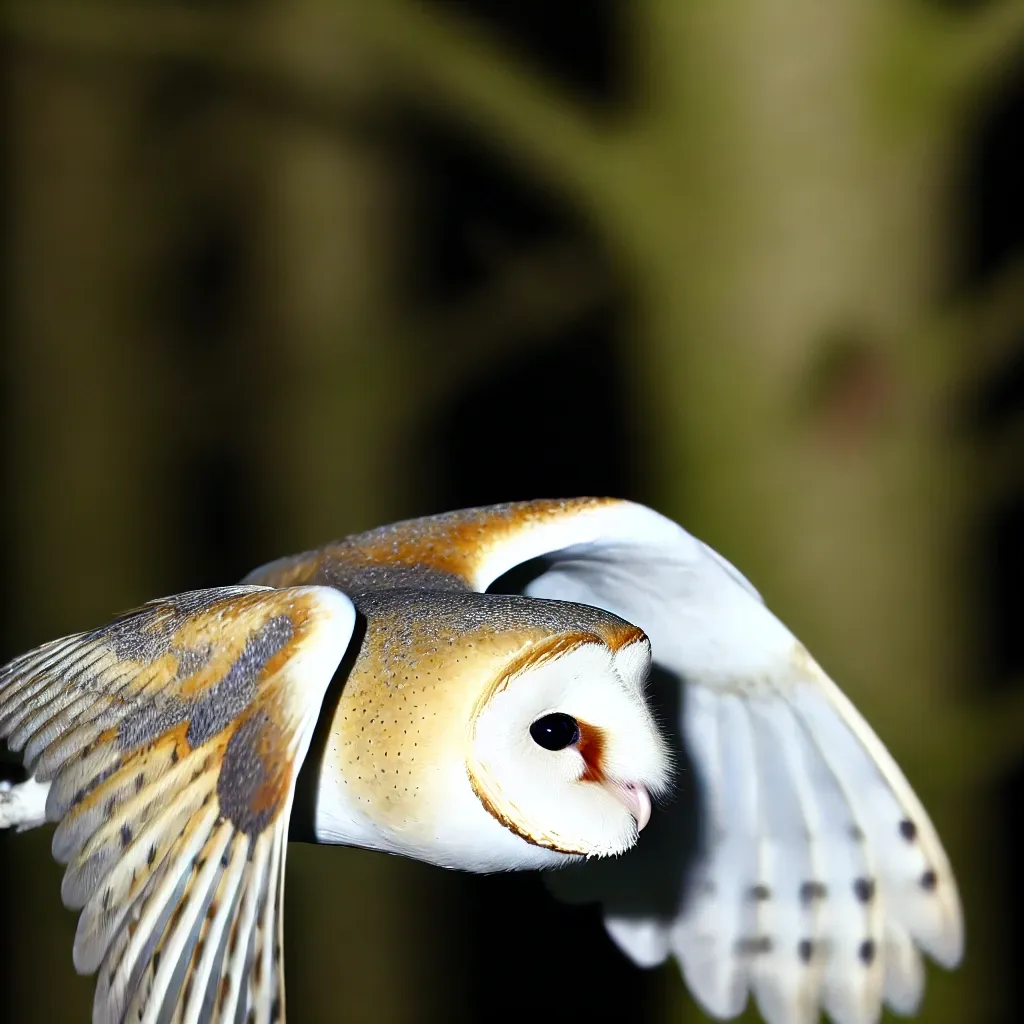
Falcons
Falcons are diurnal birds of prey known for their incredible speed and agility. They exhibit various adaptations that make them formidable hunters:
- Sharp Talons and Beaks: Falcons have strong, curved talons and beaks designed for catching and killing prey.
- Exceptional Speed: The peregrine falcon (Falco peregrinus) is renowned for being the fastest bird in the world, capable of reaching speeds over 200 miles per hour during its hunting stoop (high-speed dive).
- Diet: Falcons primarily hunt other birds, making them specialized aerial predators. They also consume small mammals and insects, depending on the availability of prey.
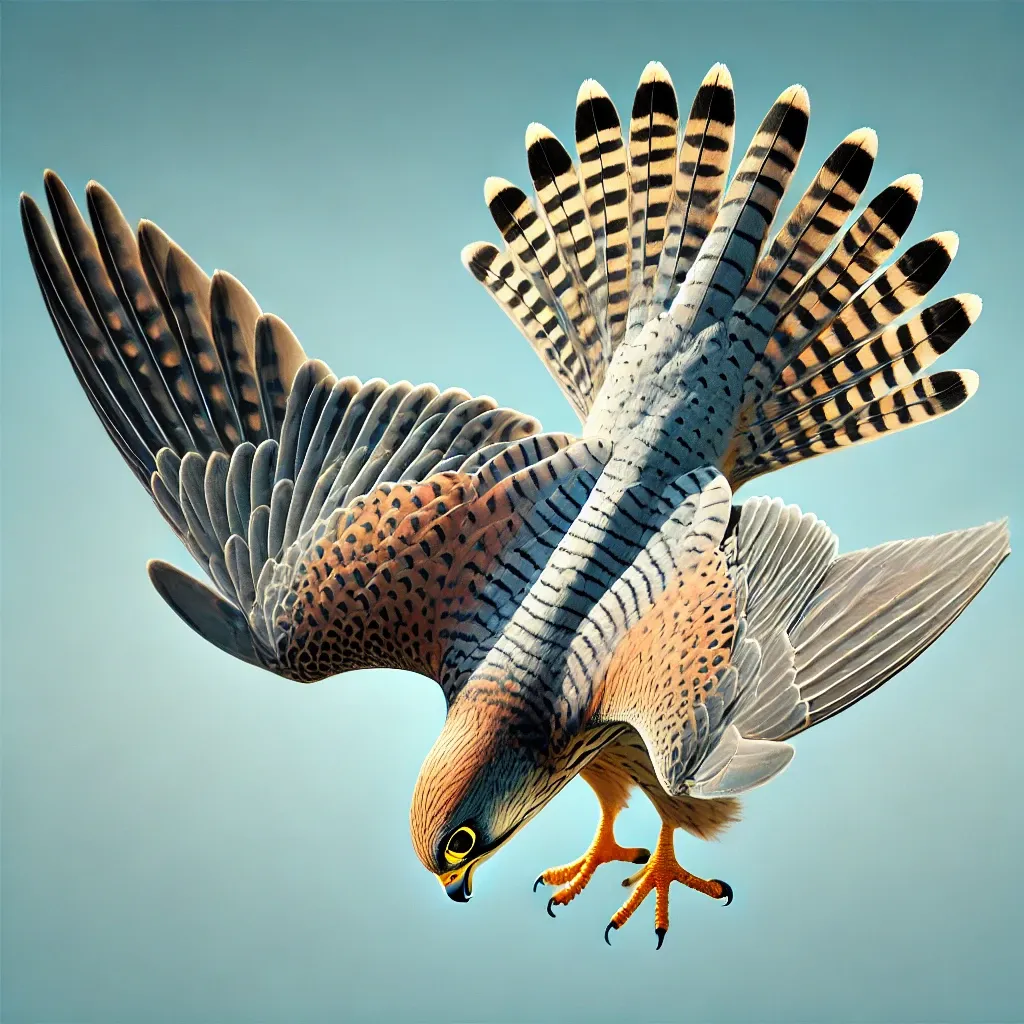
Herons
Herons are wading birds commonly found in wetlands and along shorelines. They use their long legs and necks to hunt for a variety of aquatic prey:
- Stalking and Spearing: Herons employ a stalking technique, moving slowly and deliberately through shallow waters to avoid startling prey. Once they spot a target, they use their sharp beaks to spear and catch it.
- Diet: Their diet includes fish, amphibians, insects, and small mammals. The great blue heron (Ardea herodias), for example, is often seen standing still in water, waiting to strike at passing fish or frogs
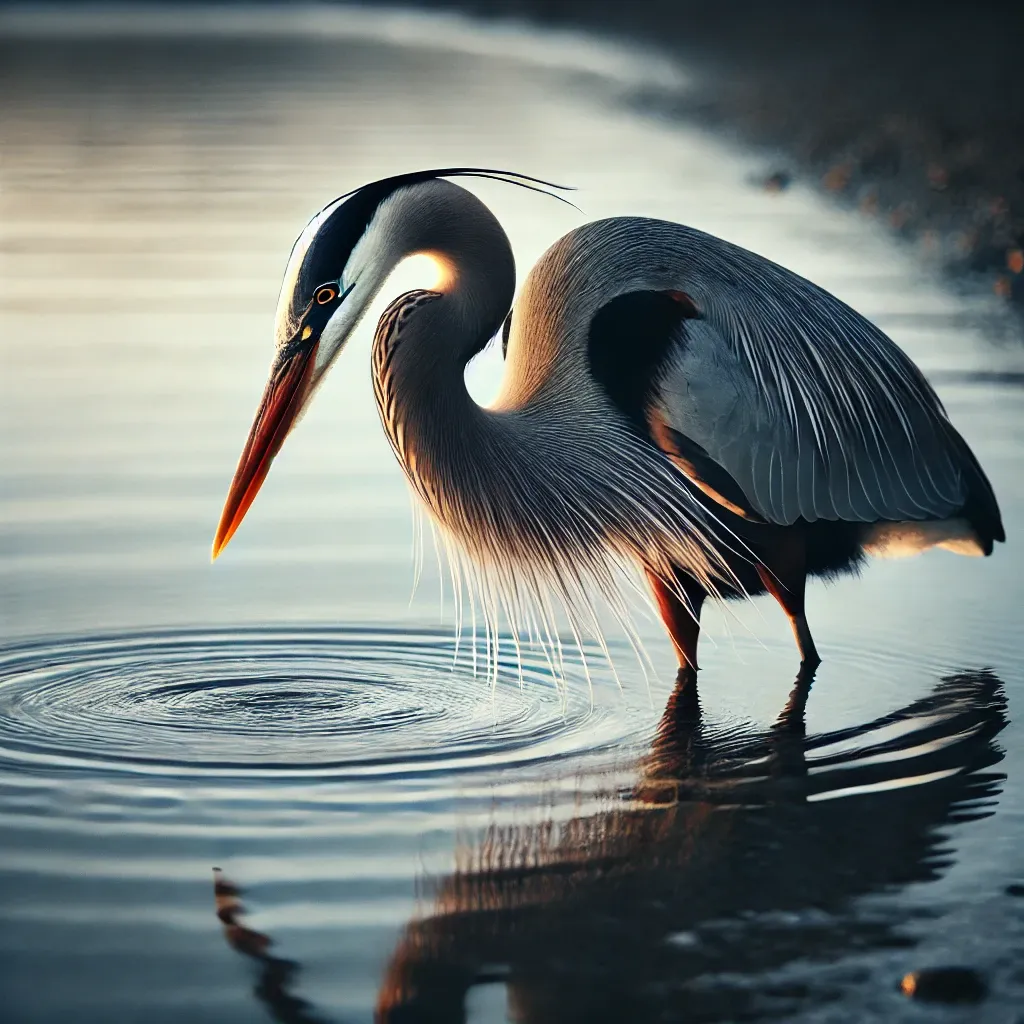
Avian secondary consumers are essential components of terrestrial ecosystems, contributing to the regulation of primary consumer populations and the overall health of their habitats. Owls, falcons, and herons each exhibit unique adaptations and behaviors that enable them to be effective predators. By understanding the roles and characteristics of these avian secondary consumers, we gain a deeper appreciation for the complexity and balance of natural food webs. This segment provides a comprehensive overview of avian secondary consumers, showcasing their importance and diversity within the ecosystem.
The Role of Secondary Consumers in the Ecosystem
Predation and Population Control
Secondary consumers are vital in ecosystems due to their role in predation and population control. By preying on primary consumers such as herbivores, secondary consumers help regulate the population sizes of these species. This regulation prevents overgrazing and depletion of vegetation, which is crucial for maintaining the health and sustainability of ecosystems. For instance, in areas where predator populations have declined, there has been a notable increase in herbivore populations, leading to significant vegetation loss and habitat degradation.
A well-documented example of this phenomenon is the reintroduction of wolves in Yellowstone National Park. Prior to their reintroduction, the absence of wolves led to an overpopulation of elk, resulting in overgrazing and damage to the park's vegetation. Once wolves were reintroduced, they helped control the elk population, allowing vegetation to recover and promoting biodiversity.
Maintaining Balance in Ecosystems
Secondary consumers play a critical role in maintaining the balance of ecosystems. They act as intermediaries in the food web, transferring energy from primary consumers to higher trophic levels. This energy transfer is essential for the sustenance of tertiary consumers and apex predators. According to the 10% rule of energy transfer, only about 10% of the energy is passed from one trophic level to the next. Secondary consumers ensure this efficient transfer of energy, supporting a diverse array of species at higher trophic levels.
Moreover, secondary consumers contribute to the stability of ecosystems by promoting species diversity. Predation by secondary consumers can reduce the dominance of certain herbivore species, allowing less common species to thrive. This diversity is crucial for ecosystem resilience, enabling ecosystems to withstand and recover from disturbances such as environmental changes or natural disasters.
Scavenging and Nutrient Recycling
In addition to their role in predation, many secondary consumers also engage in scavenging, which contributes to nutrient recycling within ecosystems. Scavengers feed on dead and decaying organisms, breaking down organic matter and returning essential nutrients to the soil. This process enhances soil fertility, promoting plant growth and supporting primary producers.
For example, hyenas are known for their scavenging behavior, consuming carcasses left behind by other predators. This scavenging activity not only cleans up the environment but also plays a significant role in the nutrient cycle. By recycling nutrients, scavengers help maintain the productivity of ecosystems and support the growth of new plant life.
Furthermore, scavenging by secondary consumers helps prevent the spread of disease by disposing of dead animals that could harbor pathogens. This cleaning role is essential for maintaining the health of both animal and plant communities within the ecosystem.
Secondary consumers are indispensable to the functioning and stability of ecosystems. Through predation, they control the populations of primary consumers, preventing overgrazing and promoting biodiversity. Their role in maintaining balance within food webs ensures efficient energy transfer and supports higher trophic levels. Additionally, scavenging by secondary consumers contributes to nutrient recycling, enhancing soil fertility and ecosystem productivity. Understanding the multifaceted roles of secondary consumers underscores their importance in preserving the health and resilience of natural ecosystems.
Human Impact on Secondary Consumers
Habitat Destruction
Human activities have led to significant habitat destruction, which poses a severe threat to secondary consumers. Deforestation, urbanization, and agricultural expansion have drastically reduced the natural habitats of many species. For instance, the destruction of forested areas has impacted predators like foxes, owls, and wolves, reducing their hunting grounds and leading to a decline in their populations. Fragmented habitats can isolate populations, making it difficult for secondary consumers to find food and mates, thereby reducing genetic diversity and increasing the risk of extinction.
Pollution
Pollution is another critical factor affecting secondary consumers. Contaminants such as pesticides, heavy metals, and plastic waste can accumulate in the food chain, causing harm to predators. For example, chemicals like DDT have been known to cause eggshell thinning in birds of prey such as eagles and falcons, leading to reduced reproductive success. Water pollution affects marine secondary consumers like dolphins and predatory fish, leading to health issues and population declines. Additionally, air pollution can impact terrestrial secondary consumers by degrading their habitats and food sources.
Hunting and Poaching
Hunting and poaching have historically threatened secondary consumers, especially large predators. Species such as tigers, lions, and wolves have been hunted for their fur, bones, and as trophies. Poaching for illegal wildlife trade has severely diminished populations of many secondary consumers, disrupting ecological balance. For instance, the illegal hunting of wolves has had cascading effects on ecosystems by allowing herbivore populations to explode, leading to overgrazing and habitat degradation.
Conservation Efforts and Success Stories
Despite the challenges, there have been significant conservation efforts and success stories aimed at protecting secondary consumers. Various strategies have been implemented to mitigate human impact, including habitat restoration, legal protection, and community-based conservation programs.
- Habitat Restoration: Projects aimed at reforesting and restoring natural habitats have helped improve the conditions for secondary consumers. For example, reforestation efforts in parts of Europe have facilitated the return of wolves and other predators.
- Legal Protection: International agreements and national laws have been established to protect endangered species. The Endangered Species Act in the United States has been instrumental in the recovery of species like the bald eagle, which faced extinction due to DDT contamination.
- Community-Based Conservation: Engaging local communities in conservation efforts has proven effective. Programs that promote coexistence between humans and predators, such as compensation for livestock losses due to predation, have helped reduce human-wildlife conflicts.
One notable success story is the recovery of the grey wolf population in Yellowstone National Park. The reintroduction of wolves in the mid-1990s not only helped restore ecological balance but also demonstrated the importance of predators in ecosystem management. This success has inspired similar reintroduction and conservation projects worldwide, highlighting the potential for positive human impact on secondary consumers(Secondary Consumer Page…).
Secondary consumers play a vital role in maintaining the health and balance of ecosystems. Their presence ensures the regulation of primary consumer populations, promotes biodiversity, and facilitates nutrient cycling. However, human activities such as habitat destruction, pollution, and hunting have posed significant threats to these important predators. Through concerted conservation efforts, including habitat restoration, legal protections, and community-based initiatives, it is possible to mitigate these impacts and support the recovery of secondary consumer populations.
Understanding the complex interactions between secondary consumers and their ecosystems, as well as the human impacts on these relationships, is crucial for effective conservation strategies. By protecting secondary consumers, we can preserve the intricate balance of natural ecosystems, ensuring their resilience and sustainability for future generations.
FAQ: secondary consumer
What is a secondary consumer?
A secondary consumer is an organism that eats primary consumers. These can be carnivores or omnivores that feed on herbivores.
What is secondary consumer?
Secondary consumers are animals that feed on primary consumers, playing a vital role in the food chain by regulating the population of herbivores.
Explain how the loss of a plant, or producer, in an ecosystem can affect a secondary consumer.
The loss of a plant, or producer, can lead to a decrease in the population of primary consumers, which are herbivores. This reduction can subsequently affect secondary consumers that rely on primary consumers for food, leading to potential starvation and population decline.
What is a secondary consumer in a food chain?
In a food chain, a secondary consumer is an organism that feeds on primary consumers, helping to transfer energy from herbivores to higher trophic levels.
What is an example of a secondary consumer?
An example of a secondary consumer is a wolf that preys on deer, or a hawk that hunts small birds and mammals.
Which organism is both a secondary and tertiary consumer? Rabbit, fox, grasshopper, shrew?
The fox is both a secondary and tertiary consumer as it can feed on herbivores like rabbits (secondary consumer) and also other predators like shrews (tertiary consumer).
What is the secondary consumer?
The secondary consumer is an organism that primarily eats primary consumers. They are a crucial link in the food web, ensuring energy transfer from lower to higher trophic levels.
What comes after secondary consumer?
After the secondary consumer in a food chain comes the tertiary consumer, which feeds on secondary consumers.
What is a secondary consumer?
A secondary consumer is an organism that eats primary consumers. They can be carnivores like lions or omnivores like bears.
What is the difference between a primary consumer and a secondary consumer?
Primary consumers are herbivores that feed on plants, while secondary consumers are predators or omnivores that feed on primary consumers.
Wolves eat elk, and elk eat blackberries. Which species is a secondary consumer?
In this scenario, the wolves are the secondary consumers, as they feed on the elk, which are primary consumers.
What animal is a secondary consumer?
An example of an animal that is a secondary consumer is the hawk, which preys on smaller birds and mammals.
What is the role of the mouse? Primary consumer, secondary consumer, producer, decomposer?
The role of the mouse can be both a primary consumer and a secondary consumer, depending on its diet. It primarily eats plants but can also consume insects.
What does secondary consumer mean?
A secondary consumer is an organism that feeds on primary consumers, thus playing a key role in the food web by controlling herbivore populations and facilitating energy transfer.
From producer to secondary consumer, about what percentage of energy is lost?
About 90% of energy is lost as it moves from producers to secondary consumers due to metabolic processes and heat loss.
Which organism is the secondary consumer?
A secondary consumer is an organism that eats primary consumers, such as a snake that eats rodents.
Which organism is the secondary consumer?
In a typical food chain, a secondary consumer could be a bird of prey like a hawk that feeds on herbivorous animals.
What does a secondary consumer eat?
A secondary consumer primarily eats primary consumers, which are herbivores. For example, a fox might eat rabbits and other small mammals.
What secondary consumer eats grasshoppers?
Birds such as sparrows and starlings are secondary consumers that eat grasshoppers.
Write a food chain in which the hawk is a secondary consumer.
Grass → Grasshopper → Snake → Hawk. In this food chain, the hawk is a secondary consumer feeding on the snake.
Which of the following is a secondary consumer in the food web shown above?
In the context of a typical food web, a secondary consumer could be a frog that eats insects.
What is a secondary consumer ecological niche?
A secondary consumer's ecological niche involves preying on primary consumers and maintaining the balance of populations within an ecosystem.
What is the definition of secondary consumer?
A secondary consumer is defined as an organism that consumes primary consumers. They are typically carnivores or omnivores.
Which organism is both a secondary and tertiary consumer?
An example of an organism that can be both a secondary and tertiary consumer is a large fish that eats smaller fish (secondary consumer) and other large fish (tertiary consumer).
What is a secondary consumer in a food web?
In a food web, a secondary consumer is an organism that feeds on primary consumers, helping to transfer energy through the trophic levels.
Which of the following organisms is a secondary consumer?
In a given food web, a secondary consumer might be a bird that preys on herbivorous insects.
In the aquatic ecosystem shown, which organism would be considered a secondary consumer?
In an aquatic ecosystem, a fish like a trout that feeds on smaller fish or zooplankton can be considered a secondary consumer.
Which organism is a secondary consumer in this food web?
In a typical food web, a secondary consumer could be a bird or a small mammal that feeds on insects and other herbivores.
What is the prey of a secondary consumer?
The prey of a secondary consumer typically includes primary consumers such as herbivores. For example, a frog (secondary consumer) preys on insects (primary consumers).
Describe how a secondary consumer is dependent on the sun for its energy.
A secondary consumer depends on the sun indirectly. Plants use sunlight to produce energy through photosynthesis, which is then consumed by herbivores (primary consumers). Secondary consumers eat these herbivores to obtain energy, thus relying on the sun's energy stored in plants.
What is a secondary consumer ecological niche?
A secondary consumer's ecological niche involves regulating the population of primary consumers and contributing to the balance and energy flow within the ecosystem.
What is after secondary consumer?
After the secondary consumer in a food chain comes the tertiary consumer, which preys on secondary consumers.
Why is a hawk considered a secondary consumer?
A hawk is considered a secondary consumer because it feeds on primary consumers like small birds and mammals.
Which organism is a secondary consumer?
In many ecosystems, organisms like snakes and birds of prey act as secondary consumers.
What secondary consumer eats rabbits?
Secondary consumers that eat rabbits include predators like foxes and birds of prey such as hawks.
Which organism is a secondary consumer?
In a forest ecosystem, secondary consumers can include animals like owls and foxes that prey on herbivores.
What is the secondary consumer in a food chain?
In a food chain, a secondary consumer is an organism that eats primary consumers. An example would be a lion that preys on zebras.
What is another name for a secondary consumer?
Another name for a secondary consumer is a carnivore or omnivore that feeds on primary consumers.
What is the definition of a secondary consumer?
A secondary consumer is an organism that eats primary consumers, helping to transfer energy through the food web and maintain ecological balance.
According to the food web shown, which organism is both a primary consumer and a secondary consumer?
An organism that can be both a primary and secondary consumer is an omnivore like a bear, which eats plants and animals.
Which one of the following organisms eats a secondary consumer in this food web?
A tertiary consumer in the food web, such as an eagle, can eat secondary consumers like snakes.
Which organism in this diagram is a secondary consumer?
In a typical food web diagram, a secondary consumer could be a predatory fish that eats herbivorous fish.
Which organism is the secondary consumer in this food chain?
In a food chain involving grass, grasshoppers, and frogs, the frog is the secondary consumer as it preys on the grasshopper.
Which organism in the food chain is a secondary consumer?
A secondary consumer in a food chain might be a bird that feeds on herbivorous insects.
Which organism is the secondary consumer in this food chain?
In a forest food chain, an owl preying on mice (primary consumers) is a secondary consumer.
The diagram shows a forest food web. Which organism is both a secondary and tertiary consumer?
In a forest food web, a bear can be both a secondary and tertiary consumer, eating herbivores (secondary consumer) and other predators (tertiary consumer).
What secondary consumer eats deer?
Secondary consumers that eat deer include large predators such as wolves and cougars.
What is a secondary consumer in science?
In science, a secondary consumer is an organism that eats primary consumers. They are typically predators or omnivores.
What secondary consumer eats caterpillars?
Birds such as sparrows and robins are secondary consumers that eat caterpillars.
What is a secondary consumer in the ocean?
In the ocean, a secondary consumer can be a fish like a barracuda that preys on smaller fish.
What does a secondary consumer eat?
A secondary consumer eats primary consumers, such as herbivores and other smaller animals.
What secondary consumer eats squirrels?
Secondary consumers that eat squirrels include predators like hawks and foxes.
From producer to secondary consumer, what percentage is lost?
About 90% of energy is lost as it transfers from producers to secondary consumers due to metabolic processes and heat dissipation.
What is the difference between a primary consumer and a secondary consumer?
Primary consumers are herbivores that feed on plants, while secondary consumers are predators or omnivores that feed on primary consumers.
What is another name for an animal that is only a secondary consumer?
Another name for an animal that is only a secondary consumer is a carnivore.
Which organism is a secondary consumer in this food web?
In a given food web, a secondary consumer could be a frog that eats insects.
What is a secondary consumer example?
An example of a secondary consumer is a lion, which preys on herbivores like zebras and gazelles.
How does a secondary consumer obtain its energy?
A secondary consumer obtains its energy by consuming primary consumers, which are herbivores that have eaten plants and obtained energy from the sun.
What is a primary, secondary, and tertiary consumer?
Primary consumers are herbivores that eat plants, secondary consumers are predators or omnivores that eat primary consumers, and tertiary consumers are top predators that eat secondary consumers.
What does secondary consumer mean in science?
In science, a secondary consumer is an organism that feeds on primary consumers in a food chain, contributing to energy transfer and population control within ecosystems.
In the food web, what organism is both a secondary and tertiary consumer?
In a food web, a bear can act as both a secondary and tertiary consumer, feeding on herbivores (secondary) and other predators (tertiary).
What is a secondary consumer in the rainforest?
In the rainforest, a secondary consumer could be a jaguar that preys on herbivores like capybaras and monkeys.
Which trophic level in this food chain represents the secondary consumer?
The secondary consumer occupies the third trophic level in a food chain, feeding on primary consumers which are at the second trophic level.
What is after a secondary consumer?
After a secondary consumer comes a tertiary consumer, which preys on secondary consumers and is often an apex predator.
Why is the hawk considered a secondary consumer?
The hawk is considered a secondary consumer because it preys on primary consumers like small birds and mammals, making it a key predator in the food chain.
Which two of the following arrows show matter moving from a secondary consumer to a decomposer?
Arrows showing the decomposition of dead secondary consumers by bacteria and fungi illustrate the movement of matter from secondary consumers to decomposers.
What comes after the secondary consumer?
After the secondary consumer in a food chain comes the tertiary consumer, which preys on secondary consumers and occupies a higher trophic level.
Which of the following organisms is a secondary consumer?
In a typical food web, a secondary consumer could be a frog that eats herbivorous insects.
Which best describes the role of a secondary consumer in a food web?
The role of a secondary consumer in a food web is to regulate the population of primary consumers, facilitating energy transfer and maintaining ecological balance.
Which organism in this food web is both a secondary and tertiary consumer?
In some food webs, organisms like bears can act as both secondary and tertiary consumers, feeding on herbivores (secondary) and other predators (tertiary).
Which of the following best describes a secondary consumer in a food chain?
A secondary consumer in a food chain is an organism that preys on primary consumers, such as a snake that eats rodents.
Which organism in this food web can be a primary consumer and a secondary consumer?
An omnivore like a bear can act as both a primary consumer (when eating plants) and a secondary consumer (when eating herbivores).
Explain why the hawk is considered a secondary consumer.
A hawk is considered a secondary consumer because it preys on primary consumers like small birds and mammals, which have fed on plants or insects.
What is the definition of secondary consumer in science?
In science, a secondary consumer is an organism that feeds on primary consumers, playing a vital role in energy transfer and population control within ecosystems.
What is an example of secondary consumer?
An example of a secondary consumer is a shark that preys on smaller fish in the ocean.
What is not a secondary consumer?
A primary consumer, such as a deer that feeds on plants, is not a secondary consumer.
What comes after a secondary consumer?
After a secondary consumer comes the tertiary consumer, which preys on secondary consumers in the food chain.
What a secondary consumer?
A secondary consumer is an organism that feeds on primary consumers in a food chain, typically carnivores or omnivores.
Which of these eats only plants for energy? A omnivore, B herbivore, C carnivore, D secondary consumer
B herbivore. Herbivores eat only plants for energy.
Why can the crab be considered a secondary or tertiary consumer?
A crab can be considered a secondary consumer when it feeds on primary consumers like snails and a tertiary consumer when it eats other predators.
Which organism is both a primary consumer and a secondary consumer in this web?
An omnivore like a bear can be both a primary consumer (eating plants) and a secondary consumer (eating herbivores).
What is the role of a secondary consumer?
The role of a secondary consumer is to regulate primary consumer populations, transfer energy through the food web, and maintain ecological balance.
Which arrow shows a secondary consumer eating a primary consumer?
An arrow pointing from a frog (secondary consumer) to an insect (primary consumer) shows this relationship in a food web.
What is a secondary and tertiary consumer?
A secondary consumer feeds on primary consumers, while a tertiary consumer preys on secondary consumers, often occupying the highest trophic level in a food chain.
What is another name for an animal that is only a secondary consumer?
Another name for an animal that is only a secondary consumer is a carnivore.
What eats the secondary consumer?
Tertiary consumers eat secondary consumers. For example, an eagle (tertiary consumer) can prey on a snake (secondary consumer).
Which organism is both a secondary and tertiary consumer?
An example of such an organism is a large fish that eats smaller fish (secondary consumer) and other large fish (tertiary consumer).
What animals are secondary consumer?
Examples of secondary consumers include wolves, hawks, snakes, and sharks.
According to the finch diagram, which of the following finches is a secondary consumer?
A finch that preys on insects would be considered a secondary consumer.
What is a secondary consumer in an ecosystem?
In an ecosystem, a secondary consumer is an organism that feeds on primary consumers, helping to control their populations and maintain ecological balance.
From producer to secondary consumer, about what percentage of energy is lost?
About 90% of energy is lost as it transfers from producers to secondary consumers due to metabolic processes and heat loss.
Which organism in the web is a secondary consumer?
In a given food web, a secondary consumer might be a bird that feeds on herbivorous insects.
How can carbon enter the biosphere via a secondary consumer?
Carbon enters the biosphere via secondary consumers when they consume primary consumers that have ingested carbon through plants.
How is a primary consumer different than a secondary consumer?
A primary consumer feeds on plants, while a secondary consumer feeds on primary consumers.
What is another name for a secondary consumer?
Another name for a secondary consumer is a carnivore or omnivore that preys on herbivores.
About how much energy is transferred from a primary consumer to a secondary consumer?
About 10% of the energy is transferred from a primary consumer to a secondary consumer.
What is a secondary consumer in biology?
In biology, a secondary consumer is an organism that feeds on primary consumers, playing a crucial role in energy transfer and population control within ecosystems.
If the producer has 20,000 kj of energy, how much energy should the secondary consumer have?
If the producer has 20,000 kj of energy, the secondary consumer should have about 200 kj of energy, considering the 10% energy transfer rule.
What is the difference between a primary and secondary consumer?
Primary consumers are herbivores that eat plants, while secondary consumers are predators or omnivores that feed on primary consumers.
What is a primary and secondary consumer?
A primary consumer is an herbivore that feeds on plants, while a secondary consumer is a predator or omnivore that feeds on primary consumers.
What is a secondary consumer in the food chain?
In the food chain, a secondary consumer is an organism that feeds on primary consumers, helping to transfer energy through the trophic levels.
Which organism is the secondary consumer in the following food chain?
In the food chain involving plants, rabbits, and foxes, the fox is the secondary consumer as it preys on rabbits.
What is a secondary consumer in the savanna?
In the savanna, a secondary consumer could be a lion that preys on herbivores like zebras and antelopes.
Which organism in this diagram is a secondary consumer?
In a typical food web diagram, a secondary consumer could be a predatory bird that eats herbivorous insects.
What is secondary consumer in food chain?
A secondary consumer in a food chain is an organism that feeds on primary consumers, helping to transfer energy and maintain ecological balance.
What is a secondary consumer?
A secondary consumer is an organism that feeds on primary consumers. They are typically carnivores or omnivores.
What organism is a secondary consumer?
An example of a secondary consumer is a hawk that preys on smaller birds and mammals.
Why is the hawk considered a secondary consumer?
The hawk is considered a secondary consumer because it feeds on primary consumers like small mammals and birds, occupying a higher trophic level in the food chain.
What does a secondary consumer do?
A secondary consumer preys on primary consumers, helping to regulate their populations and transfer energy through the food web.
Which organism is the secondary consumer in the following food chain?
In a food chain involving plants, insects, and frogs, the frog is the secondary consumer as it preys on insects.
Write a food chain in which the hawk is a secondary consumer:
Grass → Grasshopper → Snake → Hawk. In this food chain, the hawk is the secondary consumer feeding on the snake.
What is a secondary consumer in a food chain?
A secondary consumer in a food chain is an organism that feeds on primary consumers, such as a hawk that preys on small birds and mammals.
Which organism in the food web below is both a primary and secondary consumer?
In the food web below, a bear can be both a primary consumer (when it eats plants) and a secondary consumer (when it eats herbivores).
What is the difference between a primary and secondary consumer?
Primary consumers are herbivores that eat plants, while secondary consumers are carnivores or omnivores that feed on primary consumers.
Where is the secondary consumer in a food chain?
The secondary consumer occupies the third trophic level in a food chain, feeding on primary consumers which are at the second trophic level.
Explain how the loss of a plant, or producer, in an ecosystem can affect a secondary consumer.
The loss of a plant, or producer, can lead to a decrease in primary consumers, which are herbivores that rely on plants for food. This reduction in primary consumers can, in turn, affect secondary consumers, as they have fewer prey available, potentially leading to a decline in their populations.
The mouse is a primary consumer and a secondary consumer because it is which type of consumer?
The mouse is an omnivore, allowing it to act as both a primary consumer (eating plants) and a secondary consumer (eating insects).
What is the prey of a secondary consumer?
The prey of a secondary consumer includes primary consumers, which are typically herbivores. For example, a frog (secondary consumer) preys on insects (primary consumers).
What are secondary consumers?
Secondary consumers are organisms that feed on primary consumers in a food chain, playing a crucial role in energy transfer and population regulation within ecosystems.
What eats a secondary consumer?
Tertiary consumers, such as eagles or large carnivores, eat secondary consumers. For example, an eagle (tertiary consumer) can prey on a snake (secondary consumer).
What secondary consumer eats sea turtles?
Large sharks are secondary consumers that can eat sea turtles.
Explain how the loss of a plant or producer in an ecosystem can affect a secondary consumer.
The loss of a plant or producer reduces the food available for primary consumers, leading to a decline in their population. This decrease affects secondary consumers, as their prey becomes scarce, potentially causing a decline in their numbers as well.
Why is the hawk a secondary consumer?
A hawk is considered a secondary consumer because it feeds on primary consumers like small birds and mammals, placing it at the third trophic level in the food chain.
What is another term for secondary consumer?
Another term for a secondary consumer is a carnivore or omnivore that preys on primary consumers.
What secondary consumer eats monkeys in the rainforest?
Large predators such as jaguars are secondary consumers that can eat monkeys in the rainforest.
What is the role of a secondary consumer?
The role of a secondary consumer is to regulate the populations of primary consumers, facilitate energy transfer through the food web, and maintain ecological balance.
Which arrow shows a secondary consumer eating a primary consumer?
An arrow pointing from a frog (secondary consumer) to an insect (primary consumer) in a food web illustrates this relationship.
What is a secondary and tertiary consumer?
A secondary consumer feeds on primary consumers, while a tertiary consumer preys on secondary consumers, often occupying the highest trophic level in a food chain.
What is another name for an animal that is only a secondary consumer?
Another name for an animal that is only a secondary consumer is a carnivore.
What eats the secondary consumer?
Tertiary consumers eat secondary consumers. For example, a lion (tertiary consumer) can prey on a zebra (secondary consumer).
Which organism is both a secondary and tertiary consumer?
An example of such an organism is a large fish that eats smaller fish (secondary consumer) and other large fish (tertiary consumer).
What animals are secondary consumers?
Examples of secondary consumers include wolves, hawks, snakes, and sharks.
According to the finch diagram, which of the following finches is a secondary consumer?
A finch that preys on insects would be considered a secondary consumer.
What is a secondary consumer in an ecosystem?
In an ecosystem, a secondary consumer is an organism that feeds on primary consumers, helping to control their populations and maintain ecological balance.
From producer to secondary consumer, about what percentage of energy is lost?
About 90% of energy is lost as it transfers from producers to secondary consumers due to metabolic processes and heat loss.
Which organism in the web is a secondary consumer?
In a given food web, a secondary consumer might be a bird that feeds on herbivorous insects.
How can carbon enter the biosphere via a secondary consumer?
Carbon enters the biosphere via secondary consumers when they consume primary consumers that have ingested carbon through plants.
How is a primary consumer different than a secondary consumer?
A primary consumer feeds on plants, while a secondary consumer feeds on primary consumers.
What is another name for a secondary consumer?
Another name for a secondary consumer is a carnivore or omnivore that preys on herbivores.
About how much energy is transferred from a primary consumer to a secondary consumer?
About 10% of the energy is transferred from a primary consumer to a secondary consumer.
What is a secondary consumer in biology?
In biology, a secondary consumer is an organism that feeds on primary consumers, playing a crucial role in energy transfer and population control within ecosystems.
If the producer has 20,000 kj of energy, how much energy should the secondary consumer have?
If the producer has 20,000 kj of energy, the secondary consumer should have about 200 kj of energy, considering the 10% energy transfer rule.
What is the difference between a primary and secondary consumer?
Primary consumers are herbivores that eat plants, while secondary consumers are predators or omnivores that feed on primary consumers.
What is a primary and secondary consumer?
A primary consumer is an herbivore that feeds on plants, while a secondary consumer is a predator or omnivore that feeds on primary consumers.
What is a secondary consumer in the food chain?
In the food chain, a secondary consumer is an organism that feeds on primary consumers, helping to transfer energy through the trophic levels.
Which organism is the secondary consumer in the following food chain?
In the food chain involving plants, rabbits, and foxes, the fox is the secondary consumer as it preys on rabbits.
What is a secondary consumer in the savanna?
In the savanna, a secondary consumer could be a lion that preys on herbivores like zebras and antelopes.
Which organism in this diagram is a secondary consumer?
In a typical food web diagram, a secondary consumer could be a predatory bird that eats herbivorous insects.
What is secondary consumer in food chain?
A secondary consumer in a food chain is an organism that feeds on primary consumers, helping to transfer energy and maintain ecological balance.
What is a secondary consumer?
A secondary consumer is an organism that feeds on primary consumers. They are typically carnivores or omnivores.
What organism is a secondary consumer?
An example of a secondary consumer is a hawk that preys on smaller birds and mammals.
Why is the hawk considered a secondary consumer?
The hawk is considered a secondary consumer because it feeds on primary consumers like small mammals and birds, occupying a higher trophic level in the food chain.
What does a secondary consumer do?
A secondary consumer preys on primary consumers, helping to regulate their populations and transfer energy through the food web.
Which organism is the secondary consumer in the following food chain?
In a food chain involving plants, insects, and frogs, the frog is the secondary consumer as it preys on insects.
Write a food chain in which the hawk is a secondary consumer:
Grass → Grasshopper → Snake → Hawk. In this food chain, the hawk is the secondary consumer feeding on the snake.
What is a secondary consumer in food chain?
A secondary consumer in a food chain is an organism that feeds on primary consumers, such as a lion that preys on herbivores.
Authors

Thomas M. A.
A literature-lover by design and qualification, Thomas loves exploring different aspects of software and writing about the same.
Hire the best without stress
Ask us how
Never Miss The Updates
We cover all recruitment, talent analytics, L&D, DEI, pre-employment, candidate screening, and hiring tools. Join our force & subscribe now!
Stay On Top Of Everything In HR

